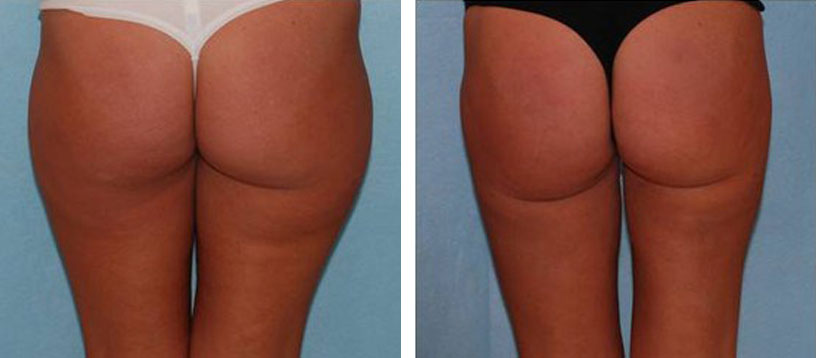Thigh Lift in Ireland
Search and Compare the Best Clinics and Doctors at the Lowest Prices for Thigh Lift in Ireland

Find the best clinics for Thigh Lift in Ireland
No clinics available
Turkey offers the best prices Worldwide
Price: $ 758

- Home
- Ireland
WHY US?
At Medijump, we're making medical easy. You can search, compare, discuss, and book your medical all in one place. We open the door to the best medical providers worldwide, saving you time and energy along the way, and it's all for FREE, no hidden fees, and no price markups guaranteed. So what are you waiting for?

Free

Best Price

Widest Selection

Risk-Free
What you need to know about Thigh Lift in Ireland

Thigh Lift, also known as thighplasty, is a cosmetic surgery to improve and reshape the appearance of the thighs by reducing excess skin and fat. The goal of a thigh lift is to contour your thighs so that they look in proportion with the rest of your body as well as to eliminate sagging skin due to aging, pregnancy, or significant weight loss. If you want your thighs to be more youthful-looking or proportionate to your body image, and fitness and weight control have not worked for you, then you can consider this procedure.
What Does the Procedure Involve?
A thigh lift is performed under general or epidural anesthetic. Your surgeon may create an incision in the groin area, then they may remove excess skin and fat. After that, your surgeon reshapes and tightens the underlying tissue, and the remaining skin is smoothed, lifted, and stitched into place at the incision site. Your doctor may also combine the procedure with liposuction.
How Long Should I Stay in Ireland for a Thigh Lift Procedure?
Since thigh lift is often performed as an outpatient procedure, you should be able to leave the hospital on the same day of the surgery. However, the recommended total length of stay in Ireland is about 14 days since your doctor needs to remove the stitches within two weeks following the surgery.
What's the Recovery Time for Thigh Lift Procedures in Ireland?
You can expect to go back to work within 7 to 10 days after your surgery, but the full recovery period until you can resume physical activity may take about 4 to 6 weeks. Since the recovery period can vary from one person to another, make sure to ask your doctor about your recovery timeline, including when you can start doing intense exercise, heavy lifting, and other vigorous activities.
What sort of Aftercare is Required for Thigh Lift Procedures in Ireland?
You will be given specific instructions regarding medication, wound care, diet, and exercise. You will likely need to attend a follow-up checkup with your plastic surgeon to monitor your healing progress. After you are fully healed, it is important for you to follow a healthy diet, have regular exercise, and maintain a healthy weight to retain the result of your thigh lift.
What's the Success Rate of Thigh Lift Procedures in Ireland?
A thigh lift is generally safe and the success rate is high. However, you need to be aware that the procedure has some side effects and risks, such as poor wound healing, infection, bleeding, seroma, asymmetry, deep vein thrombosis, skin loss, persistent pain, skin discoloration, numbness, recurrent looseness of the skin, and allergic reaction to the anesthetic.
Are there Alternatives to Thigh Lift Procedures in Ireland?
If you do not like the idea of undergoing surgery or you are not an ideal candidate for the procedure, you may want to consider the alternatives, including liposuction, Vaser liposuction, and laser skin tightening. Consult with your plastic surgeon about which procedure is better for your situation.
What Should You Expect Before and After the Procedure
Before a tight lift, your thighs may look dimpled, saggy, and flabby. You may not feel confident about the appearance of your thighs because they are not proportionate to your body image. After the procedure, you can immediately see a positive change to your thighs. Your thighs will look more youthful and firmer.
Whilst the information presented here has been accurately sourced and verified by a medical professional for its accuracy, it is still advised to consult with your doctor before pursuing a medical treatment at one of the listed medical providers
No Time?
Tell us what you're looking for and we'll reachout to the top clinics all at once
Enquire Now

Popular Procedures in Ireland
Prices Start From $26

Prices Start From $113

Prices Start From $931

Prices Start From $275

Prices Start From $76

Prices Start From $5

Recommended Medical Centers in Ireland for procedures similar to Thigh Lift

- Interpreter services
- Translation service
- Religious facilities
- Medical records transfer
- Medical travel insurance
- Health insurance coordination
- TV in the room
- Safe in the room
- Phone in the room
- Private rooms for patients available

- Interpreter services
- Translation service
- Religious facilities
- Medical records transfer
- Medical travel insurance
- Health insurance coordination
- TV in the room
- Safe in the room
- Phone in the room
- Private rooms for patients available

- Interpreter services
- Translation service
- Religious facilities
- Medical records transfer
- Medical travel insurance
- Health insurance coordination
- TV in the room
- Safe in the room
- Phone in the room
- Private rooms for patients available

- Interpreter services
- Translation service
- Religious facilities
- Medical records transfer
- Medical travel insurance
- Health insurance coordination
- TV in the room
- Safe in the room
- Phone in the room
- Private rooms for patients available

- Interpreter services
- Translation service
- Religious facilities
- Medical records transfer
- Medical travel insurance
- Health insurance coordination
- TV in the room
- Safe in the room
- Phone in the room
- Private rooms for patients available

- Interpreter services
- Translation service
- Religious facilities
- Medical records transfer
- Medical travel insurance
- Health insurance coordination
- TV in the room
- Safe in the room
- Phone in the room
- Private rooms for patients available

- Interpreter services
- Translation service
- Religious facilities
- Medical records transfer
- Medical travel insurance
- Health insurance coordination
- TV in the room
- Safe in the room
- Phone in the room
- Private rooms for patients available

- Interpreter services
- Translation service
- Religious facilities
- Medical records transfer
- Medical travel insurance
- Health insurance coordination
- TV in the room
- Safe in the room
- Phone in the room
- Private rooms for patients available
Thigh Lift in and around Ireland
Introduction
Ireland, also known as the Republic of Ireland, is a country located in north-western Europe that occupies 26 of 32 counties on the island of Ireland. The country’s breath-taking landscape, wonderful people, and fascinating history have made it an unforgettable destination for many visitors. Aside from its beauty, more and more people also come to Ireland for high-quality healthcare. The country is a newcomer to the medical tourism market. However, it’s seen as an increasingly attractive destination due to the reasonably priced and high standard of clinical care available in the country. Most foreign patients come for cosmetic surgery and dental treatments, but many hospitals and clinics in the country offer a wide variety of services, such as cardiology, pathology, pulmonary, and gynecology. Also, the Joint Commission International has accredited several hospitals in the country, most of which are located in Dublin.
Popular Cities and Regions in Ireland
Ireland’s capital and largest city, Dublin, is the most popular tourist destination within the country. In fact, it’s the fourth most visited European capital. It’s filled with excellent pubs serving the perfect pint of Guinness, amazing Georgian architecture, and layers of fascinating history. Tourists in this city usually visit the Guinness Storehouse Factory, tour the Old Jameson Distillery, admire the Spire of Dublin, explore Dublin Castle, and marvel at the beauty of St. Patrick’s Cathedral. Another famous city is Cork, which is the second-largest city in the country. It’s a youthful cosmopolitan city packed with artisan coffee bars and snug pubs. Tourists usually come to kiss the Blarney Stone for good luck, enjoy the coastal landscape in Mizen Head, or hike around Gougane Barra. Other popular cities and towns include Galway, Killarney, Kilkenny, and Letterkenny.
Transport in Ireland
The main airport in Ireland is Dublin Airport. It connects the country with numerous cities around the world, including New York, Abu Dhabi, and Hong Kong. Trains and buses are available to travel around the country. However, public transportation is generally sparse in rural areas. Therefore, renting a car is the best mode of transport. Taxis and Uber are available to travel inside major cities.
Visas in Ireland
Ireland has opted out of the Schengen Area. The country allows all EU citizens, as well as citizens of 56 other countries (such as the UAE and the US), to stay without a visa for up to 90 days. Citizens of other countries are required to apply for a visa in advance.
Weather in Ireland
Summer (June – September) provides plenty of sunshine and lower levels of rainfall, with an average temperature of 14°C - 16°C. Winter (October – February) is chilly, with ample rainfall and some snow. Spring and autumn are generally pleasant, with warmer temperatures and more sunshine.
Additional Info
- Local Currency: The official currency is the euro. 1 EUR is approx. 1.08 USD.
- Money & Payments: ATMs are easy to find. Credit and debit cards are widely accepted. Tipping is expected in some places, typically 10% for decent service.
- Local Language: There are several languages used in Ireland. English has been the predominant first language since the late 18th century, but Irish is still widely used by a small percentage of the population.
- Local Culture and Religion: The constitution of Ireland guarantees freedom of religion. Christianity is the largest religion. However, Islam, Hinduism, Judaism, Buddhism, Neo-Paganism, and other religions are present.
- Public Holidays: Some of the most celebrated public holidays are New Year’s Day, St. Patrick’s Day, Easter Monday, Christmas Day, and St. Stephen’s Day.
Popular Searches
- Plastic Surgery in Thailand
- Dental Implants in Thailand
- Hair Transplant in Thailand
- Breast Augmentation Thailand
- Gastric Sleeve in Thailand
- Gender Reassignment Surgery in Thailand
- Laser Hair Removal in Bangkok
- Botox in Bangkok
- Dermatology in Bangkok
- Breast Augmentation in Bangkok
- Coolsculpting in Bangkok
- Veneers in Turkey
- Hair Transplant in Turkey
- Rhinoplasty in Turkey
- Stem Cell Therapy in Mexico
- Rhinoplasty in Mexico
- Liposuction in Mexico
- Coolsculpting in Tijuana
- Rhinoplasty in Korea
- Scar Removal in Korea
- Gastric Sleeve in Turkey
- Bone Marrow Transplant in India
- Invisalign in Malaysia
- Plastic Surgery in the Dominican Republic
- Tummy Tuck in the Dominican Republic
- Plastic and Cosmetic Surgery in Poland
- Rhinoplasty in Poland
- Hair Implant in Poland
- Dental Implants in Poland
- IVF in Turkey